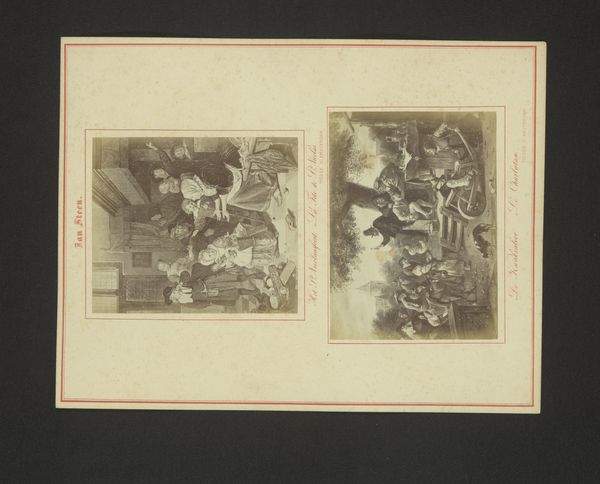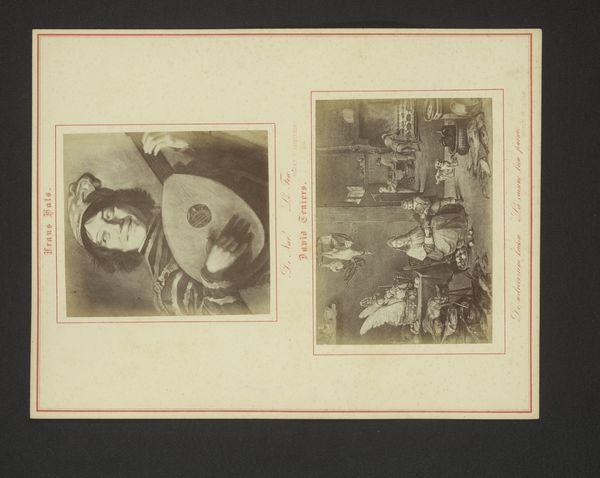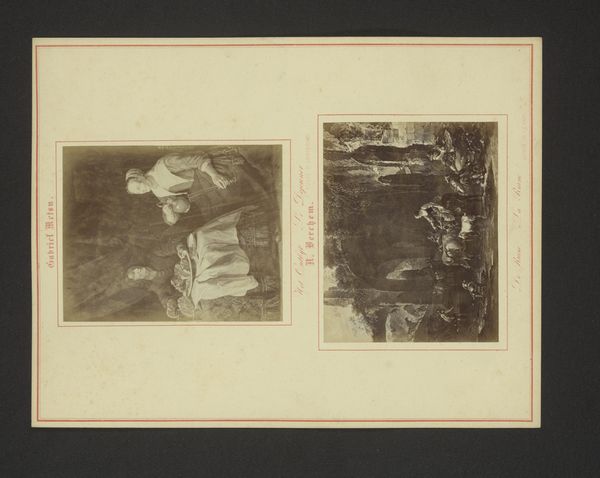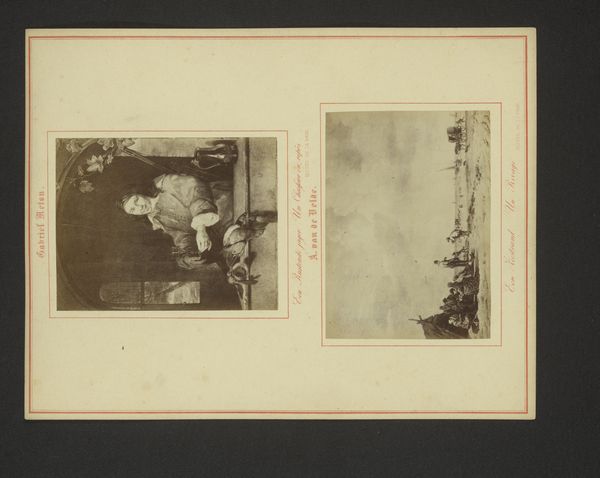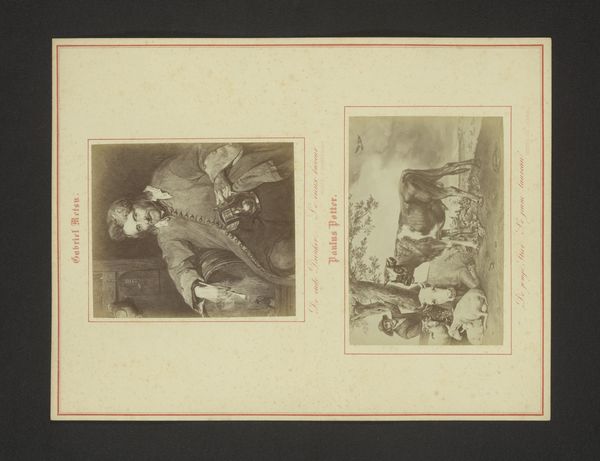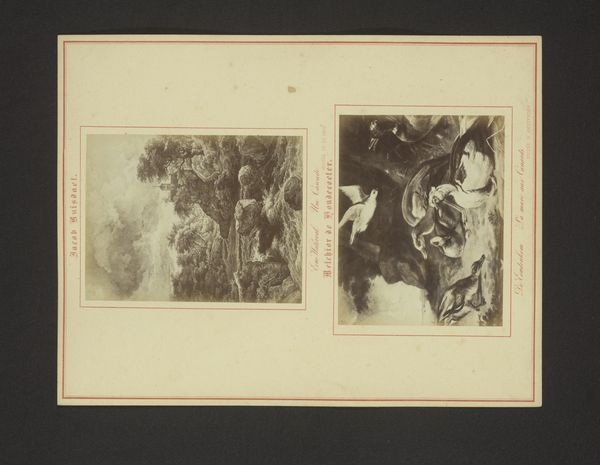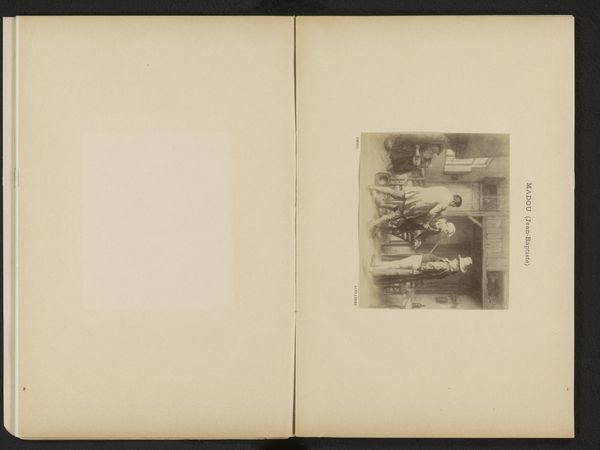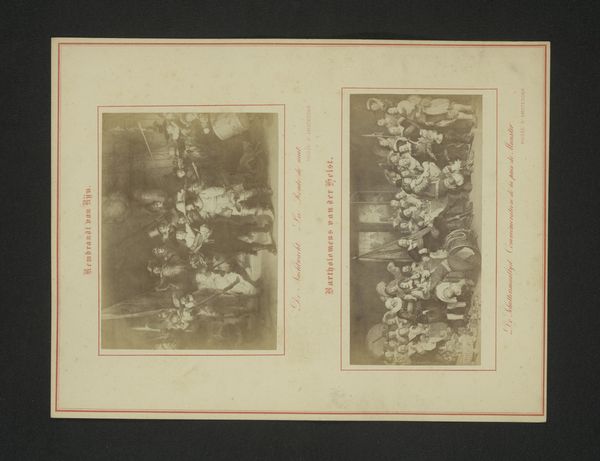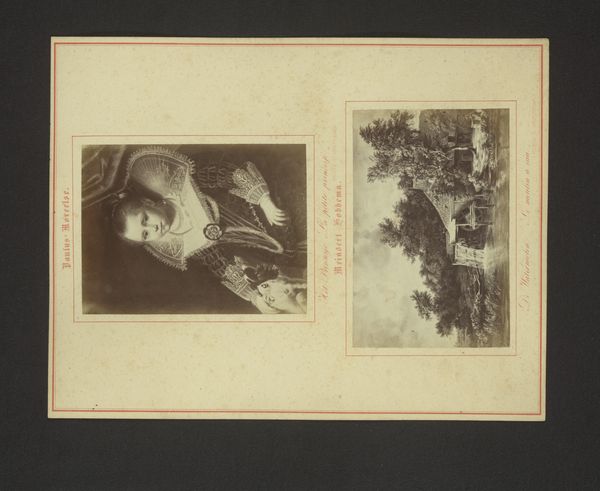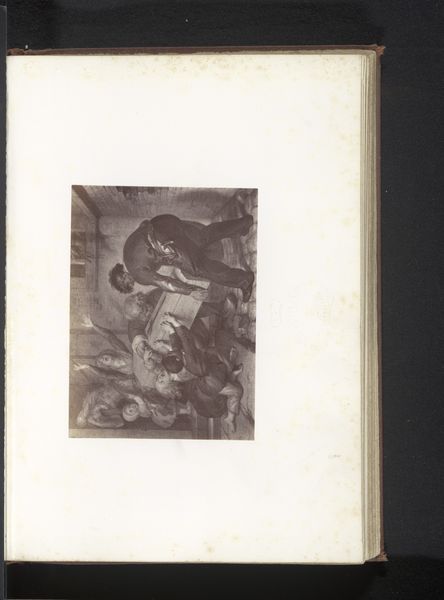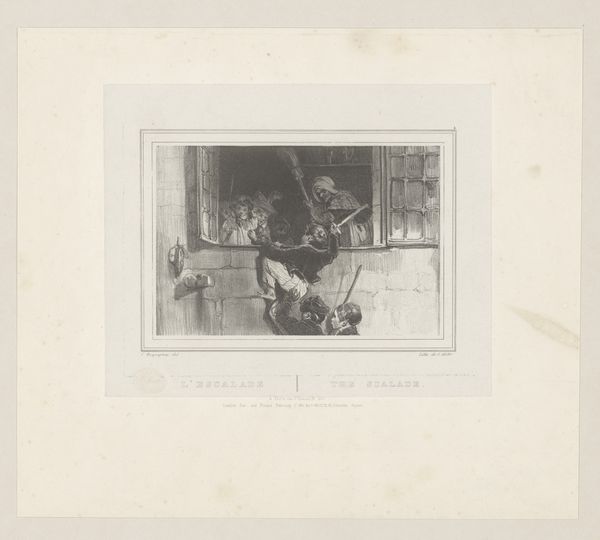
Fotoreproducties van De vaderlijke vermaning door Gerard ter Borch en Het leven van de mens door Jan Steen c. 1866 - 1874
0:00
0:00
print, paper, photography, gelatin-silver-print
#
portrait
#
aged paper
#
homemade paper
#
paper non-digital material
#
dutch-golden-age
#
paperlike
# print
#
light coloured
#
paper texture
#
paper
#
photography
#
folded paper
#
gelatin-silver-print
#
genre-painting
#
history-painting
#
letter paper
#
paper medium
#
design on paper
Dimensions: height 109 mm, width 90 mm, height 97 mm, width 108 mm
Copyright: Rijks Museum: Open Domain
Editor: Here we have "Photographic Reproductions of The paternal admonition by Gerard ter Borch and The life of mankind by Jan Steen," dated between 1866 and 1874, created by an anonymous artist, employing gelatin-silver print on paper. I’m struck by the aged quality of the print itself; it looks so delicate. What aspects of its production and context stand out to you? Curator: I see a fascinating convergence of art and technology here. These are photographs of paintings, mass-reproduced through a relatively new process at the time. It blurs the lines between unique artwork and commodity. Consider the labor involved: the photographer, the printer, and even the original painters. How does the act of reproduction change our understanding of these Dutch Golden Age paintings? Editor: That's a good point. So, it's not just about the images themselves but also the means of creating and distributing them? It's a reproduction, a copy, using innovative methods… were these widely accessible? Curator: Exactly. Think about the accessibility this format provided. Were these prints meant to democratize art viewing or perhaps serve as documentation for academic study, potentially shifting artistic authority? The use of gelatin-silver printing speaks to industrialization’s reach. And what did owning an image of artwork mean to a middle-class consumer in the 1870s? Editor: So, the materiality of the photograph – the paper, the silver – and the reproductive process are key to understanding its cultural value. It sounds like this object isn't just about the paintings it depicts but about the social and economic forces shaping art consumption. I hadn't thought about that. Curator: Precisely. This image pushes us to question the traditional art historical focus on originality and authorship and focus instead on the complex relationship between art, labor, and technological advancements. There's a world contained in this small object. Editor: This reframes how I consider the work! Focusing on the medium allows you to expand outwards into economic and social aspects. Thanks for making it more vivid.
Comments
No comments
Be the first to comment and join the conversation on the ultimate creative platform.
